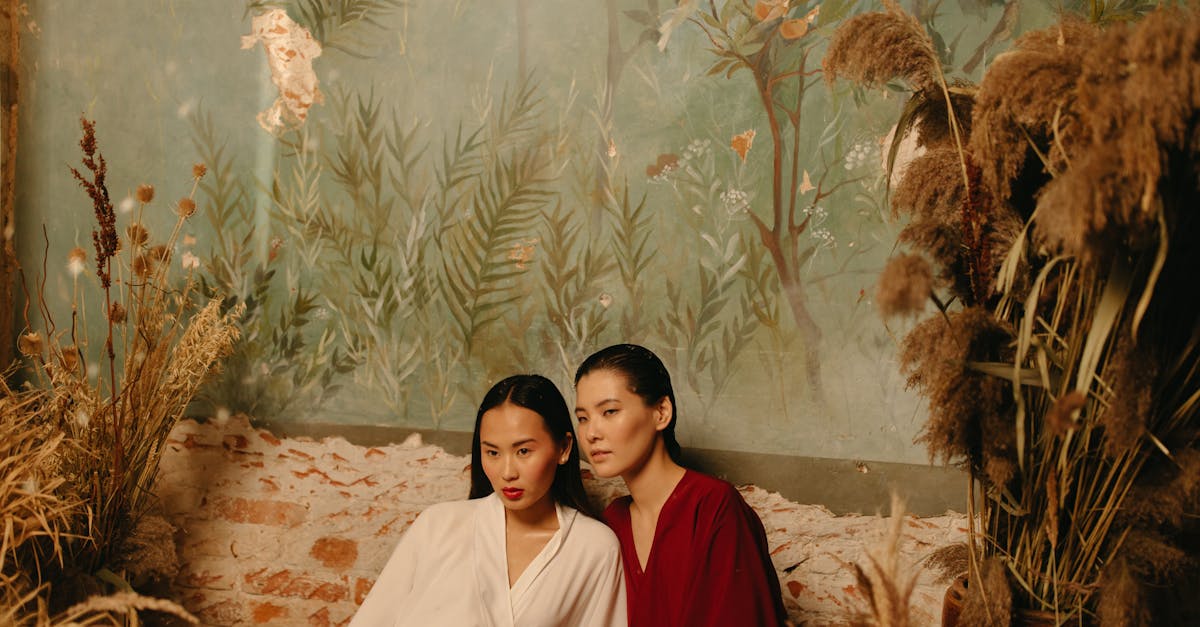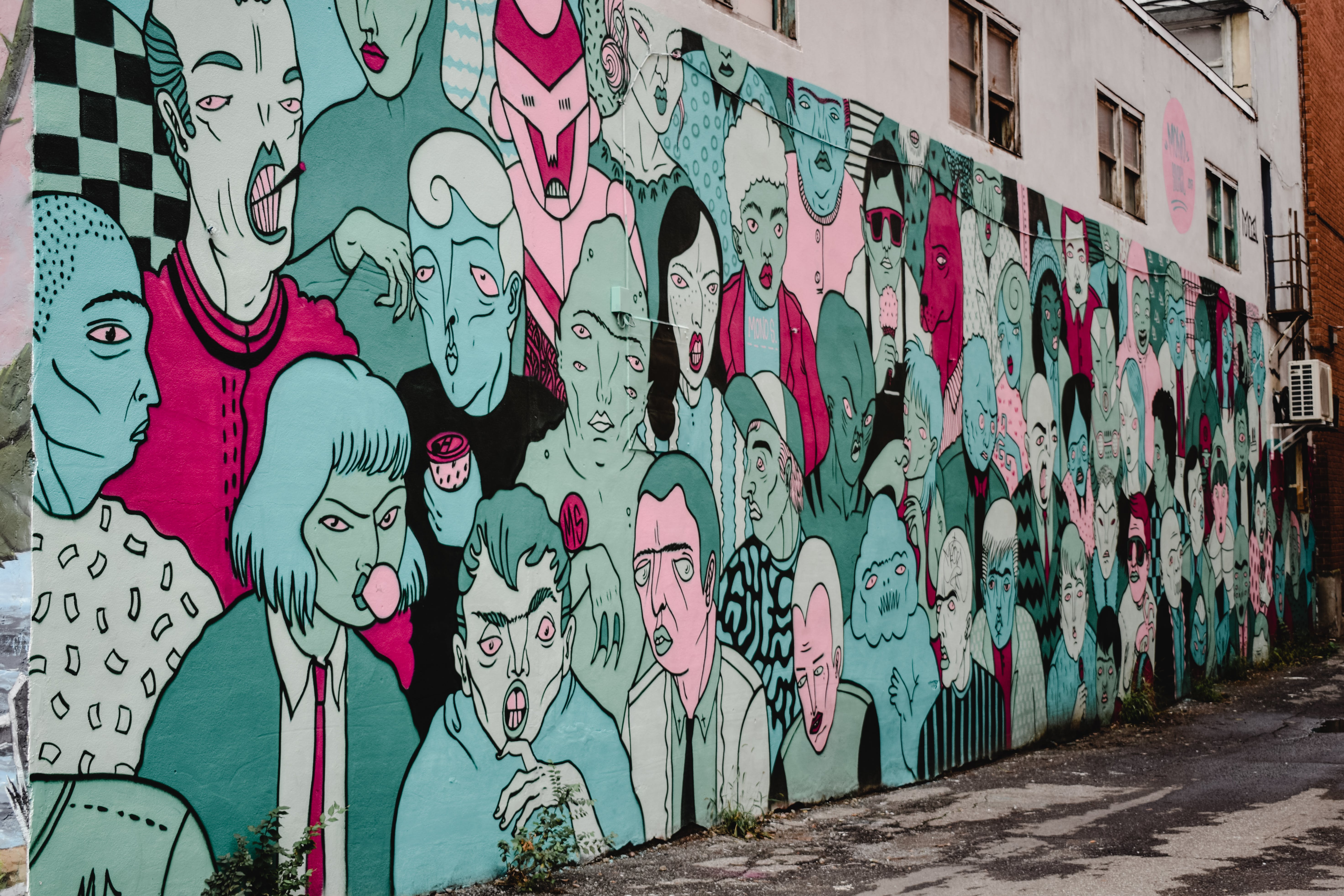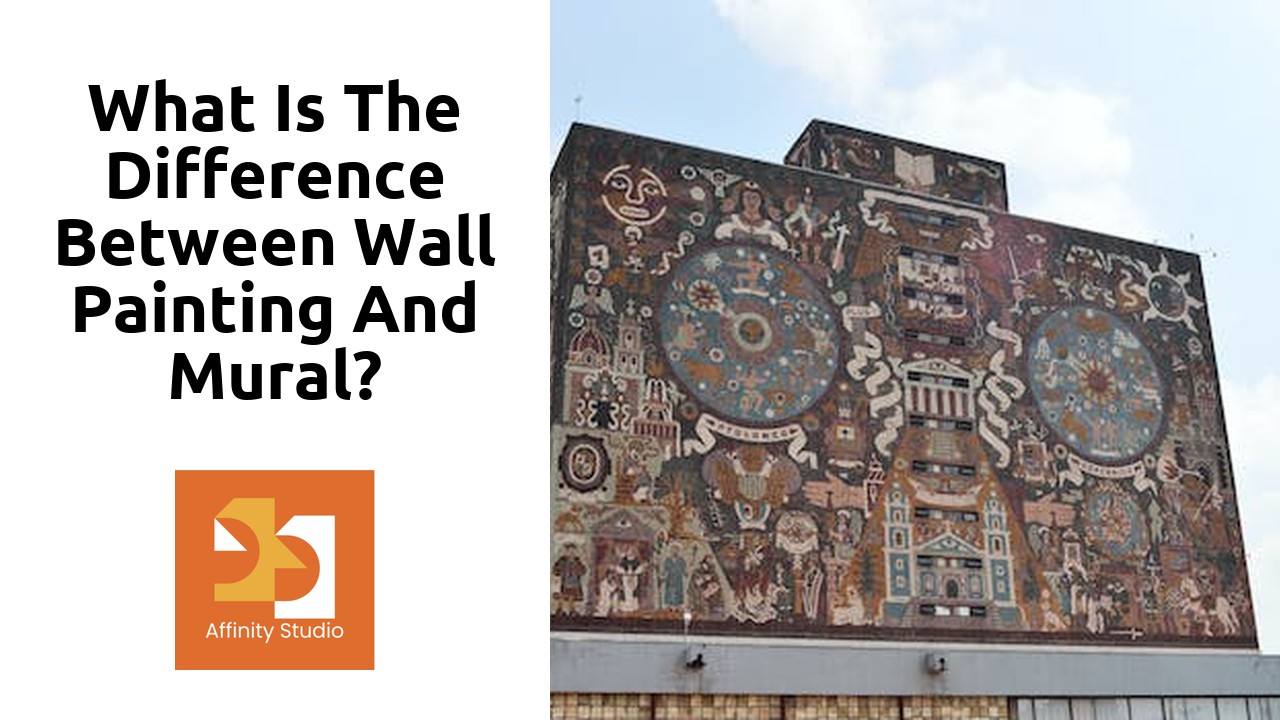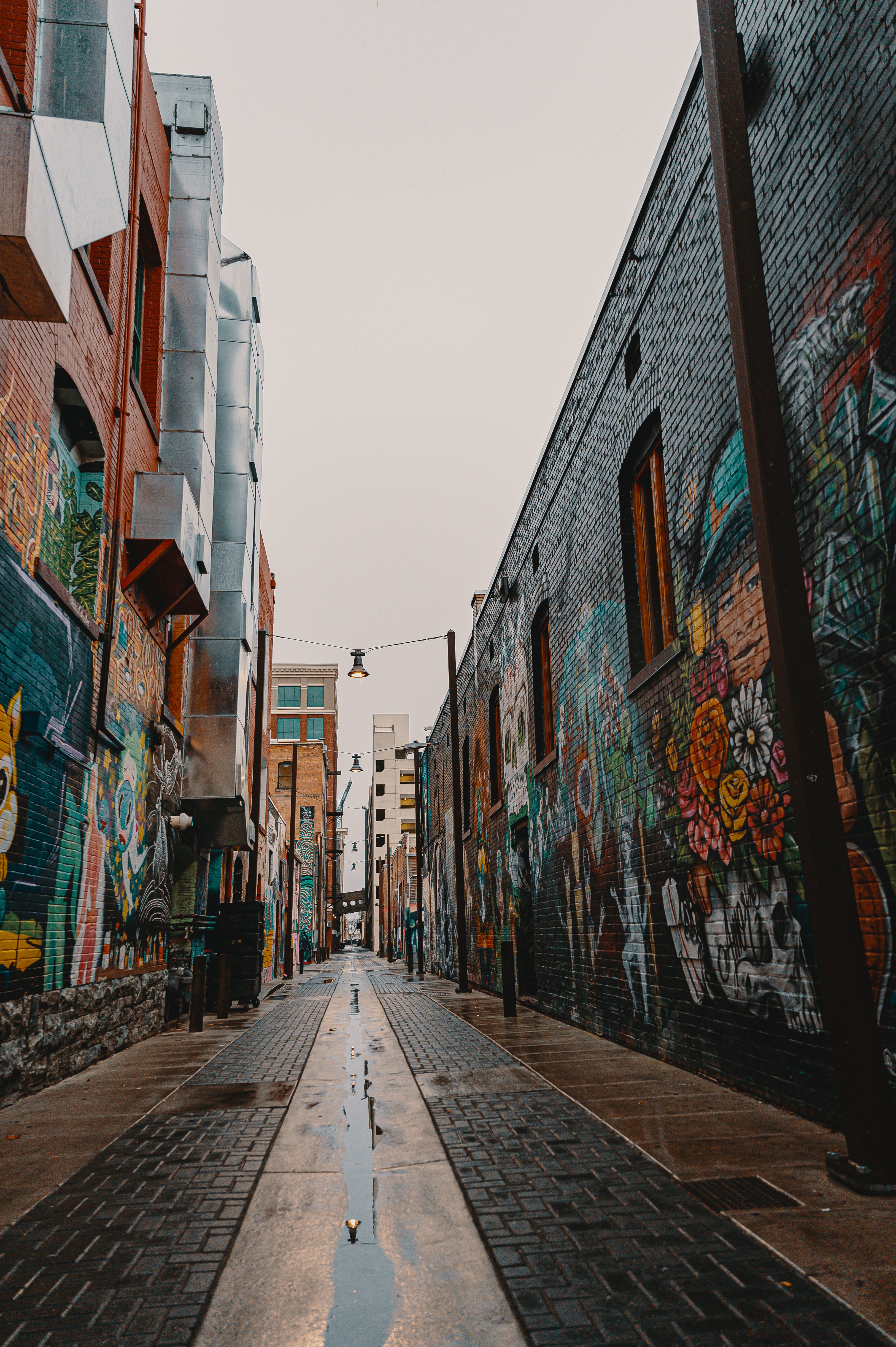Unraveling the World of Mural Art
Mural art has always been a fascinating form of expression. From walls in ancient caves to the streets of modern cities, mural painting has captured the hearts of many. No one can deny the impact that a well-executed mural can have on its surroundings. Walls that were once blank canvases are transformed into vibrant pieces of art that reflect the artist’s creativity and vision. Whether it is a small mural in someone’s home or a large-scale piece adorning the side of a building, the truth is that mural work holds a lot of power. However, there are often misconceptions and myths surrounding mural painting. Some people believe that only professional artists have access to the necessary skills and materials to create murals, creating a no-win situation for aspiring muralists. But the reality is that anyone can try their hand at mural painting. With a little bit of practice, the right surface options, and some basic materials, anyone can become a muralist and bring their artistic vision to life on a wall space. So, let’s unravel the world of mural art and dispel any myths that may be holding you back from exploring this captivating form of expression.
Mural Art as a Form of Expression
Mural art has long been recognized as a powerful form of expression. The act of mural painting offers artists a blank canvas, whether it be a plywood board, a wood wall, or any other surface they choose, to transform their thoughts and ideas into a visual call to action. In this article, we will explore the many facets of mural art as a form of expression, discussing the techniques, materials, and subject matter that artists can use to create impactful works. Whether you are a seasoned mural painter or someone who is just beginning to delve into this art form, this article is the perfect resource for you. So, check out the following paragraphs to gain valuable insights and unlock the potential of mural art as a means of expression.
One of the most significant benefits of mural art as a form of expression is that it allows artists to communicate their thoughts and ideas on a large scale. Unlike smaller-scale pieces, murals have the power to captivate and engage viewers from a distance, making a strong impact on the surrounding space. The size and scale of a mural give artists the opportunity to work with vibrant colors, intricate details, and bold designs. In addition, the subject matter of a mural can be tailored to suit the artist’s style and the audience they wish to reach. Whether your aim is to create a thought-provoking piece that sparks conversations or a visually stunning work that brings joy to passersby, mural art provides a platform for artists to express themselves and make a lasting impression.
Walls as Blank Canvases for Artists
Walls have long served as blank canvases for artists to showcase their creativity through mural painting. From painting advertising for businesses, such as business signs and logos, to large-scale billboards, mural advertising has become a popular form of showcasing art in the public eye. In fact, mural art has gained so much attention that it has even been featured on reality TV shows like Shark Tank, where artists pitch their mural painting services to investors. The power of mural art lies in its ability to offer a unique and eye-catching way to enhance branding, transform office spaces, or add a touch of art to any environment.
Mural painting offers endless possibilities for artists to bring their ideas to life on a grand scale. With techniques like stenciling, sponging, stippling, and underpainting, muralists can create stunning wall murals that captivate audiences and transform spaces. However, mural painting also comes with its own set of challenges. Issues like cracks, dirt, grease, and moisture damage can all cause problems during the painting process. To ensure a successful mural project, artists need to properly prepare the wall, use the right painting techniques, and protect their artwork with varnish. By understanding these mural techniques and taking the necessary steps to address potential issues, artists can create breathtaking murals that leave a lasting impression.
Profound Impact of Mural Design on Spaces
Mural design has a profound impact on spaces, transforming ordinary walls into captivating works of art. Whether it’s a small accent piece or an entire wall mural, the addition of painted artwork can completely change the atmosphere of a room. The choice of materials, such as acrylics or household paint, and preparatory measures, like sanding and priming the wall, are crucial in ensuring the adherence and longevity of the mural. Stencils can be used to create intricate details or block out larger areas, while gel mediums can be applied to add texture or create a three-dimensional effect. The variety of colors, from vibrant greens for fields to soft shades for clouds, allows the painter to create a sense of depth and realism. Ultimately, mural design has the power to turn any space into a visual masterpiece, leaving a lasting impression on all who encounter it.
Enhancing Aesthetics through Wall Murals
Enhancing aesthetics through wall murals is a captivating way to transform any space. Mural painting allows artists to create stunning visuals that can transport viewers to a different world. By incorporating elements such as the sky, for instance, an artist can add depth and interest to the artwork. Techniques such as blending colors with paper towels or using the grid method to sketch out the composition ensure a smooth transition from imagination to surface. Whether it be painting wildlife, alphabet letters, or planets, mural art has the power to bring any subject to life on a wall.
One technique that is commonly used to enhance the illusion of depth in mural painting is glazing. By applying thin layers of transparent color over a base layer, artists can create a sense of distance and motion. Products like Golden’s glazing medium and matte medium can be used to achieve this effect, allowing the mural to have a subtle sheen under different lighting conditions. Additionally, an isolation coat can be applied to protect the mural for conservation purposes, especially if it is intended for display in a museum or public space. With the right products and techniques, mural painting can truly elevate a space, making it a true work of art.
The Role of Wall Painting in Interior Design
Wall painting plays a pivotal role in interior design, transforming blank walls into stunning canvases for artistic expression. Mural painting, in particular, allows artists to showcase their creativity and unique styles. By using techniques such as glazing liquid and shading, muralists can bring various parts of a room to life. From intricate corners to larger-than-life artwork, mural painting offers endless possibilities for adding depth and visual interest to any space. With the right art supplies and mastery of techniques, artists can create stunning murals that captivate the eyes and bring the entire room together.
The history of mural painting is rich and diverse, with examples found in ancient cave paintings and elaborate frescoes in ancient Greece and Rome. The term “mural” is derived from the Latin word “muralis,” meaning “wall.” Muralists have employed different mediums and techniques throughout the ages, such as tempera painting and fresco painting. Renowned mural artists like Diego Rivera have left their mark on the art world with iconic works showcasing vibrant colors and powerful storytelling. From government buildings to façade designs, murals have become a popular form of artistic expression, blurring the lines between art and everyday life. Whether it’s a trompe-l’œil painting that creates an optical illusion or a graffiti-style mural that speaks truth to power, wall painting continues to evolve and inspire, making it an essential element of interior design.
Commanding Mural Techniques for Artists
Mural painting is a form of art that has been practiced for centuries, with roots dating back to prehistoric times. The Chauvet Cave in France and the Oxtotitlán Cave in Mexico are famous examples of early mural art. Throughout history, murals have been used to convey stories, convey political messages, or simply beautify spaces. In ancient times, murals adorned the walls of palaces and tombs, while in the Renaissance period, artists like John Frederick Brill created stunning trompe-l’œil scenes. Today, mural painting has evolved into a versatile art form that can be found in a variety of communities. From advertising murals on city walls to tile murals in private homes, artists use oil paints, acrylics, and other mediums to create stunning works of art. Whether it’s a large-scale mural encapsulating the spirit of a town or a small tile mural adding a touch of beauty to a kitchen backsplash, mural painting has the power to transform any space and evoke emotion in viewers.
Essential Skills Every Mural Painter Should Master
Mural painting is a unique form of artistic expression that requires a range of essential skills to master. One important skill is the ability to choose the appropriate mural technique for each project. For instance, mural artists may specialize in the ancient technique of “buon fresco,” which involves applying pigment directly onto wet plaster. This method, famously used by Renaissance artists like Michelangelo, creates a seamless integration of color and surface. Alternatively, artists can opt for the “secco” technique, which involves painting on dry plaster. This method allows for greater flexibility and the use of various materials, such as egg tempera or acrylic paint. By mastering these techniques, mural painters can create stunning works of art that captivate audiences and enhance any space.
Another crucial skill for mural painters to master is effective communication. Mural artists often work closely with clients, whether it be an individual, school, or city, to bring their vision to life. This requires the ability to listen and understand the client’s desires and goals for the mural. Effective communication also extends to collaborating with other professionals, such as architects or interior designers, to ensure that the mural harmonizes with its surroundings. Mural painters must be able to effectively communicate their ideas, whether through sketches, presentations, or consultations. By developing strong communication skills, mural artists can create meaningful and impactful artworks that resonate with their clients and communities.
Tips to Improve Your Mural Painting Technique
To improve your mural painting technique, there are several tips and tricks that can enhance your skills and make your artwork stand out. One important technique used by famous mural painters like Ignazio Pozzo and Gianbattista Tiepolo is the use of egg yolk as a binder for the paint. This traditional method provides a strong bond between the mural and the wall, ensuring its longevity and resistance to various conditions such as UV rays and humidity. Another tip is to carefully plan the layout of your mural by starting with a pencil sketching. This step allows you to plan the composition, size, and placement of the different elements in your mural, creating a visually pleasing and harmonious result.
An Indepth Study of Mural Development
Mural development is a fascinating and intricate process that encompasses various aspects of art and creativity. From the initial design to the final product, mural painting involves careful planning, skillful execution, and a deep understanding of the subject matter. Murals have been used throughout history as a means of expressing emotions, commemorating events, and beautifying spaces. Whether it is a depiction of historical figures, stunning landscapes, or thought-provoking imagery, murals have the power to captivate viewers and leave a lasting impact. They can be found in schools, public spaces, memorials, and even on the walls of coffee shops and restaurants. The versatility of mural art allows artists to explore a wide range of themes and ideas, from social issues such as racism and environmentalism to personal expressions of life and death. With the rise of street art aesthetic, renowned artists like Keith Haring, Shepard Fairey, Os Gemeos, and Faile have gained recognition for their mural creations, which often feature bold colors, striking imagery, and powerful messages. Mural development is not limited to traditional painting techniques; it has evolved to incorporate digital art forms such as pixel art and maya art. The growing popularity of mural painting has sparked a revival of public art, turning walls into canvases that not only beautify spaces but also serve as tourist attractions and symbols of cultural significance. Despite the allure of mural art, there are challenges that artists face, such as restrictions imposed by local regulations, potential damage to the artwork, and the issue of defacement. However, murals continue to hold their ground as a form of expression that transcends boundaries and connects people through the universal language of art. Whether it is a small piece on the streets of a city or an expansive mural in a public square, the visual impact and emotional resonance of mural art cannot be denied.
From Design to Finished Mural: A Stepbystep Guide
Mural painting has long been a popular form of artistic expression. From the ancient civilizations of Mesopotamia to modern-day cities, murals have adorned walls in various manners. In the past, sign-writers were often commissioned to create murals for commercial purposes, with sponsors covering the costs. Today, mural painting has evolved beyond business foot traffic and patronage by grants and cities. The introduction of urban improvement programs and a shift in attitudes have led to a norm where residents and venue owners actively seek murals as a means to beautify their surroundings and bring awareness to social issues. The impact of wall paintings extends beyond the aesthetics, as they contribute to a sense of community and dialogue between artists and the public.
Exploring Variations of Painted Wall Murals
Exploring the world of painted wall murals reveals an array of fascinating variations in mural painting techniques and styles. From the vibrant and colorful works of artists like Cuní and Wood, street art murals can be found in cities all over the world, from Germany to Santander. Mural tiles and printing press techniques have also been utilized to create intricate and detailed murals, like the ones found at the Prestoungrange Gothenburg in Scotland and the Supreme Court building in Washington, D.C. Even renowned artists like John Singer Sargent have dabbled in mural painting, with his stunning murals adorning the walls of the Boston Public Library. The possibilities for painted wall murals are endless, with each artist and location bringing a unique perspective and creative vision to their work.
When it comes to exploring variations of painted wall murals, there are no limits to the subjects and themes that can be depicted. From historical events and landmarks, like the Ayr War Memorial in Scotland or the Warren James mural in Parkend, to more contemporary and personal projects, like a school project or a mural dedicated to the local community, painted wall murals can tell powerful stories and spark meaningful conversations. In places like the separation barrier in Warsaw or the deal murals in Belfast, murals have become integral parts of the local landscape, reflecting the history and aspirations of the communities they belong to. From political statements to expressions of beauty, painted wall murals have the ability to captivate and engage viewers, making them an essential aspect of public art and cultural expression.
Practical Mural Painting Tips for Beginners
Practical mural painting tips for beginners can greatly enhance their understanding and execution of this art form. Artists can draw inspiration from various sources, including Sardinia with its rich history of mural painting, or the collaboration between Mint&Serf and Wieden+Kennedy to create stunning murals in New York City. Experimenting with different materials, such as glass tiles or tilework, can add a unique dimension to mural designs. Breaking down the mural into smaller, manageable-size pieces allows for easier execution. Developing a strong understanding of the history and importance of mural art can guide beginners in creating meaningful and impactful pieces.
Mural Techniques Everyone Can Try At Home
Mural techniques can be easily tried at home, making it a fun and creative activity for everyone. With the right materials and a little bit of talent, you can bring the beauty of mural painting into your own space. Whether you want to add a touch of art to your walls or create a unique floor design, mural painting can transform your home’s interior decoration. From painting murals on walls to creating stunning wall displays, the possibilities are endless. You can even experiment with different mediums such as porcelain, ceramic, metal, or pottery plates to create your own custom mural. So, unleash your creativity and let your walls become a canvas of self-expression with mural painting!
One of the great advantages of mural painting at home is the freedom to choose your own designs. You can create murals that reflect your personal interests, such as pictures or photographs of your favorite artists like Thomas Hart Benton, John T. Roberto, or Cambridge. You can also explore different themes, such as nature, landscapes, or abstract art. Additionally, there are various techniques you can use, such as dye sublimation or mesh printing, to transfer your designs onto your walls. With the right materials and a little bit of research, you can create stunning murals that will surely impress your guests and add a unique touch to your home’s interior decor. So, grab your brushes and let your creativity flow with mural painting at home!
 Photo by Yaroslav Shuraev on pexels
Photo by Yaroslav Shuraev on pexels
Conclusion
Mural painting is a powerful form of artistic expression that has the ability to transform ordinary walls into captivating works of art. Throughout the selection process, artists carefully consider elements such as color, design elements, and imagery to create a mural that resonates with the community. The creation of a mural involves several stages, from the initial design stage to the painting process. Artists investigate the place where the mural will be located and take into account community demographics, aesthetics, and the brand of the neighborhood. They also talk to community members and leaders to get a sense of the community’s perspective and to ensure that the mural design reflects the community’s values and aspirations. Throughout the painting process, artists use various techniques and materials, such as oil paints, acrylic paint, and glaze painting techniques. They may also incorporate objects from the community into the mural design, adding a layer of meaning and personal connection. The end result is a mural that not only enhances the visual appeal of the neighborhood but also instills a sense of pride and belonging among its citizens. Mural painting is truly a collaborative and transformative art form that has the power to bring communities together and celebrate their unique culture and history.
FAQS
What is mural painting?
Mural painting is a form of art that involves painting directly on a wall or a large permanent surface, typically in public spaces.
How long does it take to complete a mural?
The time to complete a mural can vary greatly depending on its size, complexity, and the skills of the artist. It could take anywhere from a few days to several weeks or even months.
What materials are commonly used for mural painting?
Mural painters often use acrylic or latex paint due to their durability and ability to withstand outdoor conditions. Other materials used may include brushes, rollers, scaffolding, and primer.
Can anyone develop the skills to become a mural painter?
Yes, with practice and dedication, anyone can develop the necessary skills to become a mural painter. It requires a combination of artistic talent, creativity, and technical skills.
Do I need permission to paint a mural?
Yes, in most cases, you will need permission from the property owner or the relevant authorities before painting a mural, especially if it is in a public or private space.
How can I find opportunities to paint murals?
You can look for opportunities to paint murals by reaching out to local businesses, community organizations, or art societies. You can also participate in mural painting festivals or competitions.
What are some common challenges faced by mural painters?
Some common challenges include weather conditions affecting outdoor murals, working at heights, managing time and resources effectively, and incorporating the vision and preferences of the client or community.
Can I remove or modify a mural once it is painted?
Removing or modifying a mural can be challenging, especially if it is painted directly on a wall. It is generally advisable to discuss any modifications or removal plans with the property owner or authorities.
Can I paint a mural on my own property?
Yes, if you own the property, you have the freedom to paint a mural on it. However, it is still a good idea to check local regulations or homeowner association rules before proceeding.
Are there any specific safety precautions to consider while painting a mural?
Yes, safety is important while painting a mural, especially when working at heights or using ladders. It is recommended to wear appropriate protective gear, use sturdy scaffolding, and follow safety guidelines to prevent accidents.




